First off, this is the BEST writer's resource site I've found! Thank you for existing! I have several questions about if and when I finish my first novel
Add a CommentViewing: Blog Posts from All 1564 Blogs, Most Recent at Top [Help]
Results 66,751 - 66,775 of 664,870Blog: How to Write a Book Now RSS Blog (Login to Add to MyJacketFlap)
JacketFlap tags: Add a tag
Blog: Just the Facts, Ma'am (Login to Add to MyJacketFlap)
JacketFlap tags: getting_published, Add a tag
The most common mistake new writers make is to rush to publication.
http://annerallen.blogspot.com/2013/01/the-number-one-mistake-new-writers-make.html
Blog: PW -The Beat (Login to Add to MyJacketFlap)
JacketFlap tags: Obituaries, Cartoons, Saturday Morning, Top News, Add a tag
 With the cancellation of CW’s Vortexx cartoon block, broadcast television has ceased showing cartoons on Saturday Morning.
With the cancellation of CW’s Vortexx cartoon block, broadcast television has ceased showing cartoons on Saturday Morning.
With it, a cherished memory and ritual vanishes, as technology, economics, and regulations force changes to a way of life.
The decline of Saturday Morning television began in 1992, when NBC began airing a Saturday edition of Today, followed by live action shows aimed at teens.
 In 1990, after years of politicking by Action for Children’s Television, Congress passed the Children’s Television Act of 1990, requiring television stations to broadcast three hours of “educational and informational” children’s programming per week. (Here’s a listing of what is replacing Vortexx this Fall.)
In 1990, after years of politicking by Action for Children’s Television, Congress passed the Children’s Television Act of 1990, requiring television stations to broadcast three hours of “educational and informational” children’s programming per week. (Here’s a listing of what is replacing Vortexx this Fall.)
With that requirement, and the rise of niche cable channels which are exempt from the E/I bug, Saturday Morning programming slowly withered over the next two decades.
Wikipedia lists several causes:
- The rise of first-run syndicated animated programs…
- Increasing regulation of children’s programming content … [see above]
- Station owners that owned a large number of network affiliates…
- The over reliance on common tropes and clichés. [TV Tropes has the lowdown.]
- The rise of cable television networks like Disney Channel, Nickelodeon and Cartoon Network …
- The entrance of more adult-oriented cartoons into the mainstream…
- Concurrent with their film successes, Walt Disney Television Animation and Warner Bros. Animation also began producing content for television in the late 1980s and early 1990s. Both companies invested far more money into their productions than Saturday morning cartoons had done up until that point, raising the standards much higher than most television animation companies were able to reach.
- Increased awareness of childhood obesity and lethargy; advocates often targeted Saturday morning cartoons as the culprit.
- The proliferation of commercial toyline-oriented animated programs in the 1980s also led to advocacy group backlash and a decline in such programming…
- The increased availability of VHS tapes and later DVDs, Blu-rays, iTunes and videos on the World Wide Web, which, like cable, allowed children to watch their favorite cartoons at any given time.
- The development and rapid improvement in quality of video games…
- An increase in children’s participation in Saturday activities outside the home.
- A 1984 decision legalizing infomercials on American television; profits from Saturday morning infomercials were potentially much more than those from children’s programming. …
- The 1984 Supreme Court ruling in NCAA v. Board of Regents of Univ. of Oklahoma, which greatly expanded opportunities for college football on television. …
- Television networks becoming part of larger corporations. These networks included ABC (purchased by the The Walt Disney Company in 1996), CBS (purchased by Viacom in 1999, before splitting in 2005) and The WB (created by Time Warner in 1995, before merging with UPN in 2006 to create The CW). Since the parent companies already owned television animation studios, the networks preferred to air shows from these companies with programming blocks such as “Disney’s One Saturday Morning”, “Nick on CBS” and “Kids’ WB” rather than contracting out independent television animation companies.
- Many of the same networks that often showed Saturday morning cartoons began airing similar programs on weekday afternoons…
- The success of live action teen sitcoms, starting with NBC’s Saved by the Bell, which led to the rapid development of more live-action teen programming, with networks slowly squeezing out the cartoons.
- The gradual loss of most of the American companies which were, at one point, iconic and prolific producers of animated children’s shows. …
- The 2005 to 2009 decisions by breakfast cereal companies and fast food restaurants to reduce their advertising towards children. …
——————-
Some links from across the web:
Mark Evanier recollects his experience as both a viewer and employee of Saturday Morning cartoons, explaining the lucrative economics of early series, how toy companies
That was often cost-effective and deficit-financing became even more the norm for syndicated shows. Toy companies found it paid off to underwrite the cost of a series that promoted their products. A Mattel or Hasbro could easily sink a few million up front into a show about characters they were marketing to make those characters more famous. Not every time but often enough, having the show out there, five days a week in syndication, would boost toy sales enough to make that a good investment.
With such shows siphoning viewers away from networks, the networks did the logical thing: They stopped paying high license fees for Saturday morning programming. Thereafter, if you wanted to get your production on in one of those time slots on a broadcast network, you had to give it to them for a very low price and make up the rest of your costs elsewhere. Selling it cheap usually meant doing it cheap and there was a change in priorities.
No longer was it all about doing a show that would be a hit on Saturday morning because that alone was no longer enough to make a profit. It was just a way to pay part of the cost of production. You had to have your eye on foreign sales and merchandising. I wasn’t approached a lot to work on such shows because, well, I wasn’t the cheapest talent available. But the times I was asked, the producers made it clear they didn’t care that much if show drew an audience on Saturday morning. That was no longer where the game was.
And of course, since airing cartoons on Saturday mornings became a lot less lucrative, one by one the networks stopped doing it. Which got us to where they are today: They don’t do it at all anymore.
TV Party has a great rundown of the many seasons of Saturday Morning cartoons!
Some memories, slightly sugar-coated…
- In The News, quick two-minute news bites on CBS.
- School House Rock (My Hero Zero)
- Levi’s Jeans and Chords
- Electra Woman and Dyna Girl (and the rest of the Kroft Super Show!)
- Pee Wee’s Playhouse
- Thundarr the Barbarian (Gerber, Kirby, Toth, Pasko!)
- Space Ghost
- Land of the Lost (A perpetual schedule filler, usually in the summer, along with Super Friends.)
- Galaxy High (Aimee Brightower, *SIGH*)
- Spider-Man and His Amazing Friends (afterwards, I’d hike two miles, uphill, both ways, sometimes in the snow, to buy comics).
- Too young to remember the Banana Splits, but wondering who they were as I saw vague images here and there, like a light-switch cover in the late 70s at Montgomery Wards. Which…I can’t find on Google.
- Also, one-season wonders, which only exist now in Gold Key comics, or the rare lunch box. Like this…
- Shazam! (I owned a pair of socks when I was six…) (…and the cartoon was pretty good, too!)
- Films for kids. (The CBS Children’s Film Festival, Capt’n O.G. Readmore and the ABC Weekend Special, yeah, even the Afterschool Specials.)
- Which leads to a cartoon I vaguely recall a cartoon movie about an orphan black girl, and a baseball player guardian angel, which stuck in my proto-memory in 1973, like a papyrus fragment.
- Another eyeblinked peripheral memory, as I was enthralled by the idea of Yogi’s Gang, where all the classic characters teamed up . Mesmerized when they recycled the idea for the Laff-A-Lympics!
- …and a decade later:
- Those crazy TV specials shown Friday night, right before the new season.
- Avery Schreiber and Jack Burns meet Superman and Bugs Bunny in the flesh! 1973
- Boss Hogg tries to swindle Charles In Charge, 1982
- ALF Loves A Mystery! 1987
https://www.youtube.com/watch?v=k7P6Fk5PdzI
- Bronze Age comicbook collectors will remember the two-page advertising spreads featured in superhero comics. Retrojunk offers a selection found in comics and TV Guide.
- Mighty Mouse: The New Adventures; Don’t Touch That Dial (A great satire of American and Japanese animation!)
So, cartoons on television continue, mostly on Cartoon Network and Disney XD. There’s YouTube and Warner Archives, and streaming and downloads. Gone is the joy of uncertain discovery, and unspoilt wonder. But it does make it easier to share!
Part of me wonders if kids will find other distractions, like shown in the satirical and prophetic “Itchy & Scratchy & Marge” from 1990?
And part of me knows that kids will seek out the stuff that’s cool and fun and bad in large quantities, like pre-sweetened breakfast cereal. They’ll laugh uncontrollably, and some of them… well, they’ll make their own cartoons!
For those who want one last sample of just how special Saturdays were when I was younger and life was unscheduled…
We’ll be right back after these messages…
Blog: Share a Story - Shape a Future (Login to Add to MyJacketFlap)
JacketFlap tags: Add a tag
Benny is an "every kid" that pre-teens and teens will love! The Life and Times of Benny Alvarez by Peter Johnson - a #readingtub review.
http://buff.ly/1s05ETu CHILDREN'S BOOK REVIEWS - THE LIFE AND TIMES OF BENNY ALVAREZ by Peter Johnson
from Google+ RSS http://ift.tt/1vBHThD
Blog: Becky's Book Reviews (Login to Add to MyJacketFlap)
JacketFlap tags: picture books, Random House, Scholastic, Simon and Schuster, Candlewick, Roaring Brook Press, 2014, review copy, library book, books reviewed in 2014, Add a tag
The Mouse Who Ate The Moon. Petr Horacek. 2014. Candlewick. 32 pages. [Source: Review copy]
One evening, Little Mouse peered out of her hole. She was looking at the moon. "The moon is beautiful," she said as she settled down to sleep. "I would love to have my very own piece of the moon."
I enjoyed reading The Mouse Who Ate The Moon. I liked Little Mouse very much. One night Little Mouse wishes she could have a piece of the moon. The next morning, she discovers that her wish has come true. She is delighted to find a piece of the yellow moon had fallen from the sky and landed on her doorstep. She never expected it. She also didn't expect to be tempted by it, tempted to want to eat it. One thing leads to another, and soon Little Mouse is convinced that she's eaten HALF the moon and the sky will never be the same again... Her friends try to gently tell her that she's just being silly. NO ONE can eat the moon they say again and again and again. Can her good friends cheer her up again?
I love the illustrations. I love "the piece of the moon" that Little Mouse discovers. Readers may realize the truth about "the moon" long before Little Mouse does! It is a simple story that is beautifully illustrated.
Text: 3 out of 5
Illustrations: 5 out of 5
Total: 8 out of 10
The Way to the Zoo. John Burningham. 2014. Candlewick. 40 pages. [Source: Review copy]
One evening, just before Sylvie went to sleep, she thought she could see a door in the wall of her bedroom. She decided to look again in the morning to see if the door was really there. In the morning, Sylvie was late for school and forgot about the door until bedtime.
What will Sylvie find when she opens the door? You'll want to read this one and find out for yourself. (Or you could read the title and take a guess, I suppose!) I loved John Burningham's The Way to the Zoo. It was oh-so-magical for me. I loved the story progression. How Sylvie brings back animals--small animals, mainly--back to her own room night after night. I loved how careful she was with this magic. She always made sure to leave the door closed. But I also loved that there was just this one time when she forgot...
The story is just fun and joyful. I loved seeing what happened next, what animals she brought back with her. I loved the story, I did. But I didn't love the illustrations. At least not as much as I loved the text itself.
Text: 5 out of 5
Illustrations: 3 out of 5
Total: 8 out of 10
Alexander, Who's Trying His Best To Be The Best Boy Ever. Judith Viorst. Illustrated by Isidre Mones. Simon & Schuster. 40 pages. [Source: Library]
Can Alexander be "the best boy ever" for one whole week?! After suffering the consequences of eating a whole box of donuts, Alexander sets out to prove that he CAN and WILL be good, better than good, the BEST. His parents and his brothers may have their doubts, big doubts, that Alexander can stay away from trouble for even just a day or two. But Alexander has something to prove to himself. His goal is ambitious, his temptations are many. At home and at school, everywhere he goes Alexander is tempted. There are so many things he wants to do during those six or seven days that are a bit naughty--some more naughty than others perhaps. What will Alexander learn about himself during this week? Is it good or bad that he learned it? Will readers agree or disagree with Alexander's conclusions?
I liked it. I didn't love it.
Text: 3 out of 5
Illustrations: 3 out of 5
Total: 6 out of 10
Druthers. Matt Phelan. 2014. Candlewick. 32 pages. [Source: Review Copy]
It was raining. And raining. And RAINING. "I'm bored," said Penelope. "If you had your druthers, what would you do?" asked her Daddy. "What are druthers?" "Druthers are what you would rather do if you could do anything at all."
I really enjoyed reading Matt Phelan's Druthers. I loved how Penelope and her Dad played together on a rainy day. I loved turning the pages to see what she wanted to do next. Each activity was a "druther" of course. For example, wanting to go to the zoo, wanting to be a cowgirl, wanting to go to the moon, etc. Each druther leads to a fun opportunity for this father and daughter to explore together. This is a book that celebrates imaginative play. It also celebrates family! (I suppose you could also say the book handles disappointments as well.) The book is very sweet. I definitely recommend it.
Text: 4 out of 5
Illustrations: 3 out of 5
Total: 7 out of 10
Frances Dean Who Loved To Dance and Dance. Birgitta Sif. 2014. Candlewick. 32 pages. [Source: Review copy]
Once there was a girl whose name was Frances Dean. She loved to dance and dance.
Frances Dean loves to dance. She does. She loves, loves, loves to dance. But only in private. Only outside surrounded by nature. In front of people, well, Frances Dean gets too shy to dance. Will meeting a little girl who loves to sing inspire her to share her love of dance with another person? It just might!
I love the illustrations. I do. This is a beautiful book. The story and illustrations are charming. I love how passionate Frances Dean is. This book is dedicated to "all those who live with all their heart."
Text: 4 out of 5
Illustrations: 4 out of 5
Total: 8 out of 10
A Bunny in the Ballet. Robert Beck. 2014. Scholastic. 40 pages. [Source: Review copy]
Of the great many things in this world that we rabbits LOVE to do, ballet dancing tops the list! At least it does for me, Desiree Rabbit. But there were NO BUNNIES in the ballet until I came along. And this is my story...
Desiree is a bunny with big dreams. She is a Parisian bunny that wants to study ballet. She loves it so much. Dancing is her life, her passion. She adores ballet. If only she can convince a couple of humans to give her a real chance to learn and perform. Will Desiree achieve her dreams? Will she dance in a ballet?
This one is a cute read. It's predictable, I suppose. But charming too. I definitely enjoyed some of the illustrations. There were one or two that were just so very right. (I liked the illustrations of Desiree better than the illustrations of the humans in her life.)
Text: 3 out of 5
Illustrations: 3 out of 5
Total: 6 out of 10
My Pet Book. Bob Staake. 2014. Random House. 40 pages. [Source: Review copy]
Most pets, you know, are cats and dogs. Go out and take a look. But there's a boy in Smartytown whose pet is... a little book.
The boy in this story has a book for a pet. It's not that his parents wouldn't allow a cat or a dog, but, that this boy really wanted a pet book. The premise is quirky and not without potential. For some readers, this one may prove completely charming.
My problem with the Pet Book was not the premise. I found the rhythm and rhyme to be a bit off or unnatural. The rhyming just didn't work for me. And it felt like it was the need to rhyme that was driving the book, the story. For example when the book "runs away," this is the rhyme we're "treated" to:
"He ran away! He ran away!" The boy began to bleat. "How could a pet book run away without a pair of feet?"It continues,
The maid could hear the crying boy. (That sound was such a rarity.) "I think I know what happened..." (gulp) "I gave your book to...charity."Text: 2 out of 5
Illustrations: 2 out of 5
Total: 4 out of 5
The Good-Pie Party. Elizabeth Garton Scanlon. Illustrated by Kady MacDonald Denton. 2014. Scholastic. 32 pages. [Source: Review copy]
Posy Peyton doesn't want to move.
Posy Peyton may not want to move, but, Posy Peyton really doesn't have a choice in the matter. What she does have a choice in perhaps is how to handle it, how to cope with it. And one of the ways she does handle it is by baking in the kitchen with her friends. (The kitchen is the only room in the house that hasn't been boxed up...yet.) What she discovers is that GOOD PIE is better than saying good bye. And so inspiration comes, they throw a good-pie party and invite their friends and neighbors. Everyone is to bring a pie....
I liked this one.
Text: 3 out of 5
Illustrations: 3 out of 5
Total: 6 out of 10
Say Hello Like This! Mary Murphy. Candlewick. 32 pages. [Source: Review copy]
A dog hello is licky and loud...like this!
bow-wow-wow-wow!
A cat hello is prissy and proud...like this!
purrrrrr...meow
Say Hello Like This! is a fun, playful book to read aloud to little ones. It is all about the animal sounds! It is also rich in descriptive words. (licky, loud, prissy, proud, silly, happy, tiny, tappy, etc.)
I would recommend this one as a read aloud. I love the bright illustrations.
Text: 4 out of 5
Illustrations: 4 out of 5
Total: 8 out of 10
The Midnight Library. Kazuno Kohara. 2014. Roaring Brook. 32 pages. [Source: Library]
Once there was a library that opened only at night. A little librarian worked there with her three assistant owls. Every night, animals came to the library from all over the town. And the little librarian and her three assistant owls helped each and every one find a perfect book.
I really, really liked this one. I still don't know what it is about it that I do like so very much. If it is the illustrations. If it is the premise. But there is just something magical about this one for me. I find myself mesmerized by the illustrations. Most picture books are after all illustrated in more than three colors. (Midnight Library is all black, blue, and yellow.) They are simple too. Yet I find myself spending time looking at the illustrations carefully. I find the story charming. My favorite part? Well, I guess that would be when the little librarian insists that the tortoise gets a library card. The image of him with the book on his back, it just makes me smile!
Text: 4 out of 5
Illustrations: 5 out of 5
Total: 9 out of 10
© 2014 Becky Laney of Becky's Book Reviews
Blog: PW -The Beat (Login to Add to MyJacketFlap)
JacketFlap tags: Holidays, 24 hour comics day, Top News, comic book holdays, Add a tag
by Pamela Auditore
By the time some of you read this, weary artists across the country will be putting down their pencil’s as time is called on 24-Hour Comic Day.
Could you make a Comic in 24 hours?
That’s the challenge artists took up at local Comic Shops like Galaxy of Comics in Van Nuys,CA, Saturday through Sunday morning.
Beginning at 8am artists were busily drawing, inking, writing, painting, and eating boxes of pizza in an effort to complete a 24 page story in 24 hours. Forcing themselves to stretch the limit of their stamina, hoping to string comic panels into a coherent narrative without the benefit of preparation, pre-planning or a script.
If the artists complete their projects, they’ll earn the satisfaction of achieving something neither Neil Gaiman or Kevin Eastman (Teen-Age Mutant Ninja Turtles) could in the 24 hour continuous time frame. Additionally, if they finish, they are given cover letters and invited to send a copy of their comic to the national 24-Hour Comic Book Day archive, which is hosted by the Ohio State University Billy Ireland Cartoon Library and Museum.
The 24-Hour Comic Day event began simply as an exercise in 1990 by Understanding Comics cartoonist, Scott McCloud, to challenge himself and his friend Stephen R. Bissette. With comic industry big names taking part and spreading the word, metamorphosising into an annual event in 2004. (You can read the history here). Meant to help artists shake off cob-webs, push through blocks, limber up their story telling abilities and push creativity. Examples Scott McCloud and friend’s own attempts at a 24-Hour Comics (including Eastman’s and Gaiman’s) are archived here.
But what’s in it for the Comic Shop Retailer who hosts the event? I asked Warren Jaycox, owner of Galaxy of Comics.
“We’ve been doing it for a few years now. Its a great event to do, getting very artistic people in to do a 24 page comic is really cool. It’s an event and I can run a sale, make a big t0-doo of it and eat pizza!”
Why put yourself through a sleepless 24-Hours when you don’t have to? (Participants are allowed naps.)
I asked one artist, Andrew, while applying red marker to his sketchpad,”To see if I can make a comic in 24 hours. Normally, I do collage and other artwork. This is my first attempt at doing a comic.”
Another artist, Daphne, told me while taking a break and bite of dessert, “I work in a creative field. sI always need to be doing something creative. Normally, its being creative for other people and I enjoy that. But sometimes its nice to be pushed to be creative entirely for you.”
You can check out more participant’s work here.
In addition, to Galaxy of Comics, two other Comic Shops hosted 24-hour Comic Events in Southern California: The Comic Bug in Torrance https://www.facebook.com/thecomicbug and Four Color Fantasy in Rancho Cucamonga https://www.facebook.com/4cfrancho
Also, if you go to Twitter and look at #24CD, you will see more examples of artwork.
For those interested in participating next year, it will be on the First Saturday in October, regardless of date. For more information and resources http://www.24hourcomicsday.com.
Blog: I Am Still A Princess (Login to Add to MyJacketFlap)
JacketFlap tags: #art, #loveonpurpose, #makeJesusart, #musicislife, Add a tag
Blog: Read Roger - The Horn Book editor's rants and raves (Login to Add to MyJacketFlap)
JacketFlap tags: Publishing, Don't Drink and Write, Featured, Read Roger, Add a tag
 “I must stop this. I mustn’t be this way. Look. Suppose a young man says he’ll call a girl up, and then something happens, and he doesn’t. That isn’t so terrible, is it? Why, it’s gong on all over the world, right this minute. Oh, what do I care what’s going on all over the world? Why can’t that telephone ring? Why can’t it, why can’t it? Couldn’t you ring? Ah, please, couldn’t you? You damned, ugly, shiny thing. It would hurt you to ring, wouldn’t it? Oh, that would hurt you. Damn you, I’ll pull your filthy roots out of the wall, I’ll smash your smug black face in little bits. Damn you to hell.” (Dorothy Parker, “A Telephone Call.”)
“I must stop this. I mustn’t be this way. Look. Suppose a young man says he’ll call a girl up, and then something happens, and he doesn’t. That isn’t so terrible, is it? Why, it’s gong on all over the world, right this minute. Oh, what do I care what’s going on all over the world? Why can’t that telephone ring? Why can’t it, why can’t it? Couldn’t you ring? Ah, please, couldn’t you? You damned, ugly, shiny thing. It would hurt you to ring, wouldn’t it? Oh, that would hurt you. Damn you, I’ll pull your filthy roots out of the wall, I’ll smash your smug black face in little bits. Damn you to hell.” (Dorothy Parker, “A Telephone Call.”)
Writer, is this you? Elizabeth Law has some tips on The Art of Following Up.
The post Please, God, let him telephone me now appeared first on The Horn Book.
Blog: The Open Book (Login to Add to MyJacketFlap)
JacketFlap tags: Educator Resources, Common Core State Standards, CCSS, common core, common core standards appendix b, Add a tag
The Common Core has become a hot-button political issue, but one aspect that’s gone lar![]() gely under the radar is the impact the curriculum will have on students of color, who now make up close to 50% of the student population in the U.S. In this essay, Jane M. Gangi, an associate professor in the Division of Education at Mount Saint Mary College and Nancy Benfer, who teaches literacy and literature at Mount Saint Mary College and is also a fourth-grade teacher, discuss the Common Core’s book choices, why they fall short when it comes to children of color, and how to do better. Originally posted at The Washington Post, this article was reposted with the permission of Jane M. Gangi.
gely under the radar is the impact the curriculum will have on students of color, who now make up close to 50% of the student population in the U.S. In this essay, Jane M. Gangi, an associate professor in the Division of Education at Mount Saint Mary College and Nancy Benfer, who teaches literacy and literature at Mount Saint Mary College and is also a fourth-grade teacher, discuss the Common Core’s book choices, why they fall short when it comes to children of color, and how to do better. Originally posted at The Washington Post, this article was reposted with the permission of Jane M. Gangi.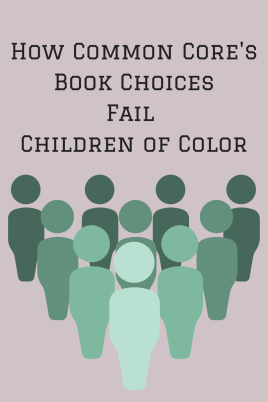
Children of color and the poor make up more than half the children in the United States. According to the latest census, 16.4 million children (22 percent) live in poverty, and close to 50 percent of country’s children combined are of African American, Hispanic, American Indian, Asian American heritage. When the Common Core State Standards (CCSS) were introduced in 2009—2010 , the literacy needs of half the children in the United States were neglected. Of 171 texts recommended for elementary children in Appendix B of the CCSS, there are only 18 by authors of color, and few books reflect the lives of children of color and the poor.
When the CCSS were open for public comment in 2010, I (Gangi) made that criticism on the CCSS website. My concerns went unacknowledged. In 2012, I presented at a summit on the literacy needs of African American males, Building a Bridge to Literacy for African American Male Youth, held at the University of North Carolina in Chapel Hill. Emily Chiarello from Teaching Tolerance acknowledged the problem and connected me with Student Achievement Partnership, an organization founded by David Coleman and Sue Pimental, “architects” of the English Language Arts standards.
In the fall of 2012, representatives from Student Achievement Partnership came to Mount Saint Mary College in Newburgh, New York, to ask our Collaborative for Equity Literacy Learning (CELL) to help right the wrong. SAP wanted us to provide an amended Appendix B. In July 2013, CELL presented SAP with a list of 150 multicultural titles, which were recommended by educators from across the country and by more than thirty award committees. All the books were annotated and excerpts were provided. The 700+ PowerPoint slides of the project can be found here. SAP then sent the project to Stanford University’s Understanding Language Program for validation of text complexity. The Council of Chief State School Officers has yet to make the addition to the CCSS website.
Why does seeing themselves in books matter to children? Rudine Sims Bishop, professor emerita of The Ohio State University, frames the problem with the metaphor of “mirror” and “window” books. All children need both. Too often children of color and the poor have window books into a mostly white and middle- and-upper-class world.
This is an injustice for two reasons.
One is rooted in the proficient reading research. In the late 1970s and early 1980s, researchers asked, “What do good readers do?” They found that good readers make connections to themselves and their communities. When classroom collections are largely by and about white people, white children have many more opportunities to make connections and become proficient readers. Appendix B of the CCSS as presented added to the aggregate that consistently marginalizes multicultural children’s literature: book lists, school book fairs and book order forms, literacy textbooks (books that teach teachers), and transitional books (books that help children segue from picture books to lengthier texts). If we want all 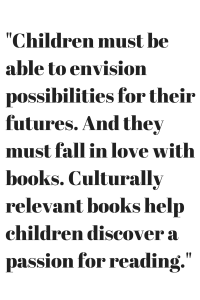 children to become proficient readers, we must stock classrooms with mirror books for all children. This change in our classroom libraries will also allow children of the dominant culture to see literature about others who look different and live differently.
children to become proficient readers, we must stock classrooms with mirror books for all children. This change in our classroom libraries will also allow children of the dominant culture to see literature about others who look different and live differently.
A second reason we must ensure that all children have mirror books is identity development. For African American children, Rosa Parks and Dr. Martin Luther King Jr. are not enough. They must also see African-American artists, writers, political leaders, judges, mathematicians, astronauts, and scientists. The same is true for children of other ethnicities. They must see authors and illustrators who look like them on book jackets. Children must be able to envision possibilities for their futures. And they must fall in love with books. Culturally relevant books help children discover a passion for reading.
I (Benfer) was one of the annotators for the project. Each year I tell my incoming fourth-grade students, “None who enter here remain unchanged” (from Brandon Mull’s Fablehaven). Participating in this project made this statement come true for my students and me. Before working to amend Appendix B, I had been teaching for 16 years, and had always been serious about my classroom library.
Reading a great book changes us. I had not yet encountered the metaphor of mirrors/windows until hearing Gangi’s talk in our children’s literature course, based on her article “The Unbearable Whiteness of Literacy Instruction.” After the talk I  found myself reflecting on the books to which I was exposing my students. I expanded my library to include many texts reviewed in the project, which allowed my students to see the wonderful diversity in the world. As my classroom library grew, my students began to read and discuss these diverse texts I began to hear students say things like, “I like books which have a black main character,” and parents emailed me to say, “I just wanted to say thank you for acknowledging Black History Month and having such a wonderfully diverse reading library for fourth grade.” Filipino students gave me a standing ovation when I purchased Anthony D. Robles and Carl Angel’s Lakas and the Manilatown Fish/Si Lakas at ang Isdang Manilatow (see Lee & Low Books for this and other multicultural books.)
found myself reflecting on the books to which I was exposing my students. I expanded my library to include many texts reviewed in the project, which allowed my students to see the wonderful diversity in the world. As my classroom library grew, my students began to read and discuss these diverse texts I began to hear students say things like, “I like books which have a black main character,” and parents emailed me to say, “I just wanted to say thank you for acknowledging Black History Month and having such a wonderfully diverse reading library for fourth grade.” Filipino students gave me a standing ovation when I purchased Anthony D. Robles and Carl Angel’s Lakas and the Manilatown Fish/Si Lakas at ang Isdang Manilatow (see Lee & Low Books for this and other multicultural books.)
I recommended Rukhsana Khan’s Wanting Mor, the story of a young girl in Afghanistan to one of my students (see Groundwood Books for this and other multicultural books). This student’s parents were astounded by the change in their daughter. She had been an uninterested reader and was transformed into an enthusiastic one. She began to request copies of books featuring girls in Afghanistan. The students and I spent countless hours creating lists of recommended texts.
What do we do with this issue now, educators? The CCSS have yet to adopt the expanded and enhanced Appendix B, but the message is too important to be filed away. This work must be must shared with educators. The expanded Appendix B contains recommended texts that are mirrors and windows for our students’ worlds.
“None who enter here remain unchanged.” Teaching Tolerance will be publishing the list in the near future. In the meantime, children of the United States are waiting for us to make this change for the better.
Jane M. Gangi is an associate professor in the Division of Education at Mount Saint Mary College in Newburgh, New York. Nancy Benfer teaches literacy and literature at Mount Saint Mary College and is a fourth-grade teacher at Bishop Dunn Memorial School. Gangi is the author of three books: “Encountering Children’s Literature: An Arts Approach,” “Deepening Literacy Learning: Art and Literature Engagements in K-8 Classrooms (with Mary Ann Reilly and Rob Cohen),” and “Genocide in Contemporary Children’s and Young Adult Literature: Cambodia to Darfur.” Both are members of the Collaborative for Equity in Literacy Learning at Mount Saint Mary College. Gangi may be reached at jane.gangi AT msmc.edu; Benfer at nb6221 AT my.msmc.edu.
Filed under: Common Core State Standards, Educator Resources Tagged: CCSS, common core, common core standards appendix b
Blog: Evil Editor (Login to Add to MyJacketFlap)
JacketFlap tags: Add a tag
The author of the book featured in Face-Liift 1225 has posted a revision in the comments there and awaits your feedback.
Blog: ComicBitsOnline.com (Login to Add to MyJacketFlap)
JacketFlap tags: Add a tag
Blog: Share a Story - Shape a Future (Login to Add to MyJacketFlap)
JacketFlap tags: Add a tag
Raised in the shadow of Vatican II? Saint Training by Elizabeth Fixmer is for you http://buff.ly/1rVsvd7 Poignant, funny and memorable! CHILDREN'S BOOK REVIEWS - SAINT TRAINING by Elizabeth Fixmer
from Google+ RSS http://ift.tt/1vBkg97
Blog: Koosje Koene (Login to Add to MyJacketFlap)
JacketFlap tags: journal, coffee, watercolour, pen, Add a tag
So a while ago, I bought this super mini sketchbook, and I have been carrying it with me, sketching in it a few times a week.
It's, 6x8cm, which is 2.3x3.4" Somehow, the little book is very accessible; the pages are small, it feels like you almost can't get wrong.
I draw small scenes in it, like this coffee sequence below (which by the way, fits right into my friend Suzi Poland's "Coffeeosophy", which you'll find a lot of at her instagram feed
Or I'll pick it up at the breakfast table, and draw what's in front of me:
When, a few weeks ago, I watched the news during breakfast and heard the sad news that Robin Williams had died, I drew his portrait.
Blog: Gurney Journey (Login to Add to MyJacketFlap)
JacketFlap tags: Paint Technique, Academic Painters, Add a tag
A 19th century painting manual describes a technique called "dry touching" where lighter tones of oils are scumbled over a middle tone base, with a result something like pastels.
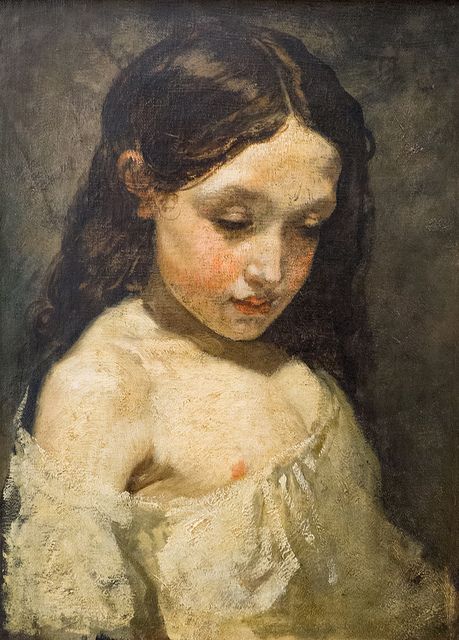 |
| Thomas Couture (1815-1879) "Bust of a Young Girl," Oil on canvas, 46 x 34 cm. |
--J.S. Templeton, Guide to Oil Painting, 1845
Images from Flickr and Pinterest
Blog: Cartoon Brew (Login to Add to MyJacketFlap)
JacketFlap tags: Feature Film, Louis Clichy, Mikros Image, Alexandre Astier, Asterix: Le Domaine des Dieux, Asterix: The Land of the Gods, Add a tag
A new teaser has been released for the French animated feature "Asterix: The Land of the Gods" directed by Alexandre Astier and Louis Clichy
Add a CommentBlog: Bartography (Login to Add to MyJacketFlap)
JacketFlap tags: Travel Channel, Can I See Your I.D.?, Ben Jones, Dr. Joseph Cyr, Ferdinand Waldo Demara Jr., Mysteries at the Museum, Texas Prison Museum, Chris Barton, Add a tag
This is a bit belated, but I appeared this past Friday night on an episode of Mysteries at the Museum on the Travel Channel. Here’s a taste:
Why me, and why this program? One of the subjects I profiled in Can I See Your I.D.? True Stories of False Identities was serial impostor Ferdinand Waldo Demara Jr.

In my book, I focused on this Massachusetts-born high school dropout’s exploits as surgeon “Dr. Joseph Cyr” in the Canadian navy during the Korean War. But when Mysteries at the Museum needed someone to speak — on camera at the Texas Prison Museum — about Demara’s stint working for the Texas prison system under the name “Ben Jones,” they went for some guy in a purple shirt calling himself “Chris Barton.”
I’ll post a link to the full episode when it becomes available online.
Blog: OUPblog (Login to Add to MyJacketFlap)
JacketFlap tags: Books, Music, 007, james bond, Frank Sinatra, Diamonds Are Forever, Adele, Tom Jones, Spotify, Shirley Bassey, *Featured, john barry, Goldfinger, thunderball, TV & Film, Skyfall, Jon Burlingame, Music of James Bond, Arts & Humanities, James Bond Day, moonraker, Add a tag
Today, 5 October, we celebrate James Bond Day, and this year has been a great one for 007. In January, both song and score for Skyfall won Grammys, and 18 September marked the 50th anniversary of the general release of the film Goldfinger in UK cinemas. Shirley Bassey’s extraordinary rendition of the title song played a key role in its success. In these extracts from The Music of James Bond, Jon Burlingame recounts the stories behind some of the great title songs.
Goldfinger
More significantly, the public seemed to be paying equal attention to Goldfinger’s bold, brassy Barry score. “The musical soundtrack is slickly furnished by John Barry, who also composed the title song,” noted Variety’s film critic; its music critic later praised the album as “the strongest Bond film score to date.” In the United Kingdom, the soundtrack album made the charts on October 31 and reached number 14. But in America, it appeared on December 12 and rocketed up the charts, reaching number 1 on March 20, 1965. It edged out the Mary Poppins soundtrack (which in turn had displaced Beatles ’65 at the top) and remained the most popular album in America for three weeks.
Goldfinger would be the only Bond soundtrack album to reach the top of the charts. Barry was nominated for a Grammy Award, and although there was no Oscar attention—for Barry, that would come later, and not for James Bond—there was the satisfaction of worldwide commercial success. United Artists Records released Barry’s driving rock instrumental of Goldfinger (with Flick on guitar) and, a few months later, an LP titled John Barry Plays Goldfinger (acompilation of his arrangements from the first three Bond films plus a handful of easy-listening tunes).
Thunderball
The whole song was written over a mid-September weekend. And Welshborn singer Tom Jones, an old friend of Black’s who had already had two top-10 hits earlier that year (“It’s Not Unusual” and “What’s New Pussycat?”), quickly agreed to sing it. Black liked his “steely, manly voice.” Britain’s New Musical Express announced Jones’s signing on September 24, and they went into the studio on October 11 to lay down the track.
“I was thrilled to bits when they asked me to do Thunderball,” Jones remembered many years later. “There was a connection, because Les Reed, who wrote a lot of my big songs, was John Barry’s pianist. The most memorable thing about the session was hitting that note at the end. John told me to hold on to this very high note for as long as possible.” Jones’s now-legendary final note lasts nine full seconds, and in the isolated vocal recording he can be heard running out of breath, although that last part is buried in the final mix with the orchestra. “I closed my eyes, hit the note and held on,” Jones said on another occasion. “When I opened my eyes the room was spinning. I had to grab hold of the booth I was in to steady myself. If I hadn’t, I would not have passed out, but maybe fallen down. But it paid off, because it is a long note and it’s high.”
Diamonds Are Forever
Eighteen years earlier, Marilyn Monroe had sung “Diamonds Are a Girl’s Best Friend” to iconic status in Gentlemen Prefer Blondes. Black’s words would make a Bond song equally famous. “Diamonds Are Forever” is more about fleeting relationships and less about the permanence of those shiny jewels that are often the remnant of a love affair—although one phrase in particular would result in the song becoming slightly infamous, and possibly costing it an Academy Award nomination.
It’s in the second verse: “hold one up and then caress it / touch it, stroke it and undress it.” “Seediness was what we wanted,” Black would later explain. “Sleaziness, theatrical vulgarity. It had to be over the top.” Or, as Barry himself would reveal in numerous interviews 20 years later, that particular verse was more about male genitalia than about precious stones: “Write it as though she’s thinking about a penis,” had been Barry’s advice to Black.
Moonraker
Williams met with Sinatra and his longtime aide “Sarge” Weiss at Sinatra’s office on the old General Services lot in Hollywood. “The amazing thing is, there was nothing there to play the demo on,” Williams recalled. “Sarge finally came up with a rusty old portable radio with a cassette player, mono, salty from the beach. And that’s what Frank heard the song on. And he loved it. ‘Marvelous, Mr. Paulie, marvelous.’ This from Music Royalty to me, and I was thrilled,” Williams said.
Sinatra opened a briefcase, which contained his datebook (and a .38, Williams noted), and they discussed possible dates for recording. “I left his office walking on air. We were all delighted. Then Frank was out. I don’t know what happened but, I was told at the time, Cubby and Frank had a big fight and he was history.”
No one remembers for certain why Sinatra ultimately declined to sing “Moonraker.” It may be that he had second thoughts, or that his ambitious Trilogy album was already in preparation and he preferred to concentrate on that. The story of a falling-out between Sinatra and Broccoli may be apocryphal, because Frank and Barbara Sinatra were all smiles at the New York premiere of Moonraker on June 28.
Skyfall
The final honors to come their way were the Grammy Awards, nearly a year later because of the later eligibility period of the National Academy of Recording Arts and Sciences. Both song and score were nominated and, on January 26, 2014, both won. Newman was present to accept his award. Skyfall had been a worldwide sensation: it became the highest-grossing film ever in Great Britain, taking in over £94 million in just six weeks. It eventually earned more than $304 million in the U.S. to rank as the fourth highest-grossing film of 2012. Its final worldwide box-office tally of $1.1 billion propelled it to the no. 8 spot among all-time box-office leaders.
Its title song had become the first Bond music ever to win an Academy Award, its score only the second ever nominated. By the end of 2013, the Adele single had gone platinum, selling over 2 million units, while Newman’s score album had sold over 30,000. Sam Mendes was signed to direct the next Bond film, set for release in October 2015. Bond, and Bond music, was bigger than ever.
Image credit: Golden Girl © Eon Productions, 1964
The post Temperamental artists, unexpected hits, and Bond appeared first on OUPblog.
Blog: Laura Bowers (Login to Add to MyJacketFlap)
JacketFlap tags: twitter, Add a tag
- Sat, 15:42: We're going to be Grand Marshals in the Festival of Fantasy parade, SQUEEE!! @WaltDisneyWorld #disneyside http://t.co/DpIhkbHbC0
- Sat, 16:12: Taken by Mindi, best @WaltDisneyWorld CM ever and granter of our Grand Marshal dreams! TY!!! #disneyside #Disney http://t.co/W1dtYlTBpc
- Sat, 17:28: #selfiesistas ready to hit Magic Kingdom and be Grand Marshals in the Festival of the Fantasy Parade! #disneyside http://t.co/yPfAFTUGm3
- Sat, 17:48: Back of our #selfiesistas shirts found by the awesome @run_angie !! #disneyside @WaltDisneyWorld http://t.co/yldVh899tZ
- Sat, 22:41: Flat Laura ready to rock the #tower10miler as Gaston!! @runDisney http://t.co/VR9hqpoWT4
- Sat, 22:44: Had a total BLAST being a Grand Marshal for the Festival of Fantasy Parade!! #disneyside @WaltDisneyWorld http://t.co/zm6wJZtsGw
- Sat, 23:02: Wore the GOOFIEST smile while being a Grand Marshal for Festival of Fantasy parade! #disneyside #Disney http://t.co/yNx1qEgbe3
- Sun, 01:16: Gaston is ready to run! @runDisney #Tower10Miler #runDisney http://t.co/eAtIBeRQpG
- Sun, 01:19: On our way to #Tower10Miler fun! @runDisney #selfiesistas http://t.co/OeCE3TaMrX
- Sun, 03:08: And we're off! #Tower10Miler #runDisney @runDisney http://t.co/r3hWelNvTe
- Sun, 03:13: Don't ask what I'm doing. I have no clue! #Tower10Miler #runDisney @runDisney #running http://t.co/wxfqu1pVYx
- Sun, 03:15: Spooky, huh? #Tower10Miler #runDisney @runDisney #running http://t.co/ZX8mK2fAXy
- Sun, 03:16: Whew! She didn't take off my head. #Tower10Miler #runDisney @runDisney #running http://t.co/MUczHsssaC
- Sun, 05:59: #Tower10Miler @runDisney #runDisney http://t.co/YC0xNrQQ0m
- Sun, 06:01: I was so happy to get this picture! #Tower10Miler @runDisney #runDisney http://t.co/1QYwPoHtsI
- Sun, 06:02: Gravediggers almost got me. #Tower10Miler @runDisney #runDisney http://t.co/iMIxpDJDjF
- Sun, 06:03: My buddy Stitch! #Tower10Miler @runDisney #runDisney http://t.co/peb8SiCJnD
- Sun, 06:09: Those zombies had some moves! #Tower10Miler @runDisney #runDisney http://t.co/ji3DJYflua
- Sun, 06:11: #Tower10Miler @runDisney #runDisney http://t.co/BRWd2FKGCa
- Sun, 06:14: Why yes, it is Gaston! #Tower10Miler @runDisney #runDisney http://t.co/3PIj3MVaLQ
- Sun, 06:17: #Tower10Miler @runDisney #runDisney http://t.co/fUblGuV32h
- Sun, 06:19: Finished my first Tower of Terror 10 Miler!! #Tower10Miler @runDisney #runDisney http://t.co/gzBSEKnTJf
Blog: Becky's Book Reviews (Login to Add to MyJacketFlap)
JacketFlap tags: Scholastic, board books, Candlewick, 2014, review copy, books reviewed in 2014, Add a tag
Open Wide. Stephen Krensky. Illustrated by James Burks. 2014. Scholastic. 14 pages. [Source: Review copy]
Time for dinner, Sam. You must be hungry. Open wide for the airplane. Pay attention, Sam. There's a lot of good food on board.
Two frustrated parents try their best to get their son, Sam, to eat his dinner. I'm not sure which parent has the "easy" role in this one: Mom with the spoon, or Dad with his crazy antics. Sam is not impressed enough, I suppose, by Dad's antics to open wide enough for Mom to slip in the spoon. Will the two give up? Should the two give up? Will Sam's dinner go into Sam?
I liked this one okay. The Dad is certainly silly. And both Mom and Dad are persistent and frustrated. But I didn't love the illustrations. (I liked them okay. But I didn't LOVE them.)
Can You Say It Too? Roar! Roar! Sebastien Braun. 2014. Candlewick. 10 pages. [Source: Review copy]
Who's that behind the bush? It's a friendly lion! Roar! Roar!
Who's that in the treetops? It's a tall giraffe! Munch! Munch!
Does your little one love to make animal sounds? Does your little one love to lift flaps in books? Then this new series in the Nosy Crow line might be a good match. The books are simple, very simple. There are only a few words per page making this one a good choice for little listeners with short attention spans. It can also be an interactive experience if you encourage your little one to join in on making all the sounds. I will say that this probably isn't the best in the series for actual animal sounds. The animals featured are lion (great choice), giraffe, hippo, crocodile, and elephant (great choice).
Earlier in the year, I reviewed two books in this series. Can You Say It Too? Moo! Moo! And Can You Say It Too? Woof! Woof!
Can You Say It Too? Growl! Growl! Sebastien Braun. 2014. Candlewick. 10 pages. [Source: Review copy]
Who's that behind the rock? A hungry bear! Growl! Growl!
Who's that among the flowers? It's a pretty parrot! Squawk! Squawk!
This is the fourth book in Nosy Crows' Can You Say It, Too? series. This series is great for little ones who love animal sounds. Also there is a big (seemingly sturdy) flap to lift for each page. All the animals are hiding, of course! Which animals can little ones find in this book? A bear! A parrot! A snake! A monkey! A tiger. You can guess based on this selection, that reading it aloud will be a treat. Plenty of opportunities to get loud and play!
Bizzy Bear's Big Building Book. Benji Davies. 2014. Candlewick. 8 pages. [Source: Review copy]
Bizzy Bear has an exciting building project to do today! First he makes sure he has all the tools he needs. Then he gets started with some measuring.
Bizzy Bear and three of his friends, Eric, Rosie, and Freddy, are all busy building something. When the project is finished, they'll all be able to enjoy it. But building can be fun too. This one is an interactive book for little ones. Little ones can measure with the tape measure. They can saw wood. They can use a drill. They can paint. The book itself seems sturdy. There are a few flaps--some of the smaller flaps--that seem a little less durable than the rest. But for the most part, I think this one was designed to be played with by the target audience.
I liked this one.
© 2014 Becky Laney of Becky's Book Reviews
Blog: Elizabeth O. Dulemba (Login to Add to MyJacketFlap)
JacketFlap tags: Add a tag
Not. It's actually computer rendered to look like paper. And its pretty cool!
It's paper from Pingo van der Brinkloev on Vimeo.
"This is a personal project. I wanted to make some infinite loops for istockphoto and I wanted to make a paper shader. The finished clips are actually only 4-5 seconds long but they can go on for ever. Then I felt like putting it all together for a little.. Mindfulness-short.
Everything is straight out of cinema4d. Sounds from freesound.org
Enjoy!"
Blog: Beth Kephart Books (Login to Add to MyJacketFlap)
JacketFlap tags: Add a tag
feel my body ease, my mind knock back the anxiety that is too much of who I naturally am. We writers can't know if our work will be of interest to one other soul. We can know if it is of interest to us. If it wakes us up in the morning, teasing: Choose me. Come near. See what happens next.
I'm a mere sixty pages into a novel for adults.
I want to see what happens next.
I realize just how much this new, strange, possibly impossible project means to me when friends ask (in our living room Friday, over an amazing dinner, last night) what I'm working on, and I feel suddenly electric in the telling.
(And glad for their forgiveness, if suddenly I talk too much.)
Blog: wordswimmer (Login to Add to MyJacketFlap)
JacketFlap tags: tension, Add a tag
Without tension, it’s almost impossible to hold a reader’s attention and keep her turning the pages of your story. And yet many of us, despite knowing this (that tension is a key ingredient in sustaining a reader’s attention), produce stories that lack tension. Why is it, I wonder, that it’s so hard to create a story with tension? Tension, as a noun, is defined as “the state of being
Blog: ART JUMBLE Blog (Login to Add to MyJacketFlap)
JacketFlap tags: bird, digital art, Manu Martin, Add a tag
Blog: Illustration Friday Blog (Login to Add to MyJacketFlap)
JacketFlap tags: design, illustration, creativity, how-to, technique, creative, tutorial / how-to, mood board, Add a tag

There’s nothing better to get a new creative project started than by making your own inspirational mood board. Creating your own mood board of idea’s and inspiration will help you to build a collection of concept base ideas to build a new art piece from whether a series of illustrations, photographs or painting. It’s not all that hard to do and once you get started creating a mood board can actually be a really enjoyable part of project building, although if you’ve not made one before here are afew easy tips to help you get started on making your own.
What do I put in a mood board?
A mood board can contain anything from doodles, words, photographs, textures , colour swatches, fabrics and much more based around a chosen theme for your project. So for example a theme maybe “ocean” to which you’d include images of its inhabitants , sea blue colour tones and meaningful words tied to the theme etc.
What do I need to make one ?
Its really down to personal preference but you can make a mood board easily in anything from the pages in your sketchbook, sticking them to a piece of artboard or a cork board with pins. There’s really no right or wrong way because your mood board is personal, there to give you idea’s and pull together concepts for your project that will help it grow.
Putting a mood board together.
- To begin putting your creative mood board together collect a series of images and inspirational materials linked to your chosen theme.
- On an a3 blank sketchbook page ( or any page size of your preference but bigger is less limiting to your mood board ideas) begin to add your mood board research to your page.
- Stick bits down with patterned washi tape or masking tape to make it more visual and allow you to change things around.
- Make it personal and have fun.
- Keep your creative mood board in sight throughout your project to stay visually inspired and consistant to your project theme to prevent getting creatively lost along the way.
Image by illustrator Katt Frank you can find out more about their work here .
Blog: Janet Reid, Literary Agent (Login to Add to MyJacketFlap)
JacketFlap tags: Add a tag
YIKES!!!
Have a happy Sunday!
View Next 25 Posts



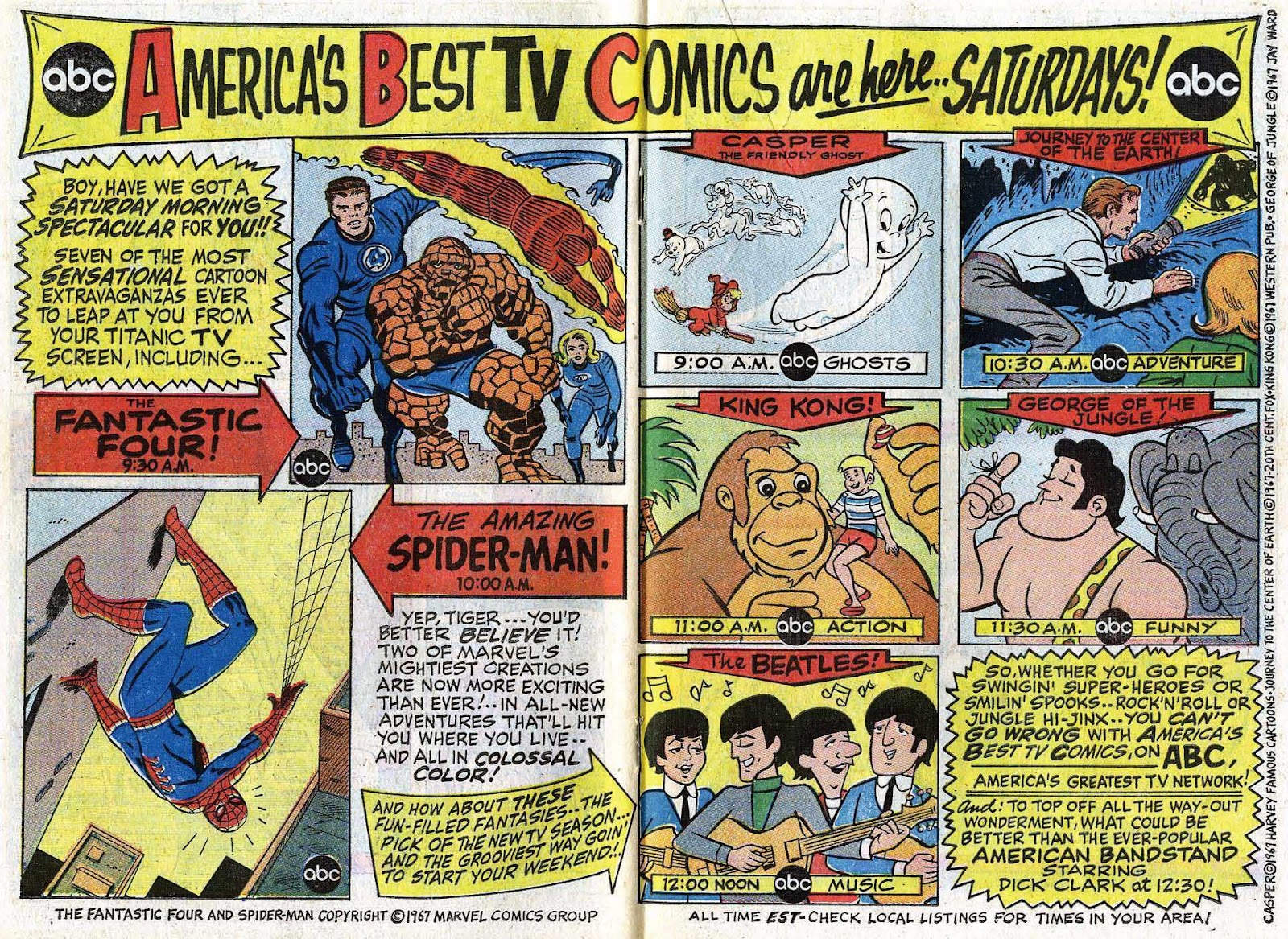
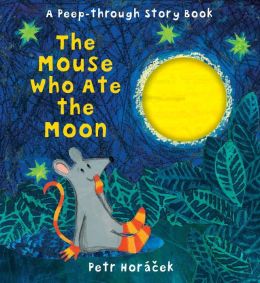
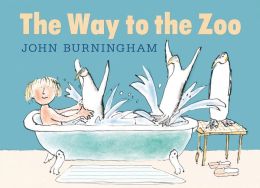

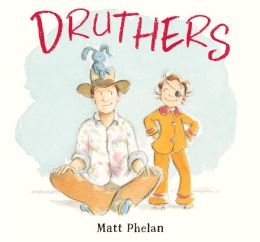
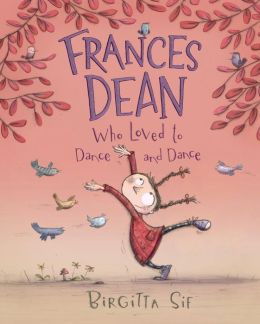

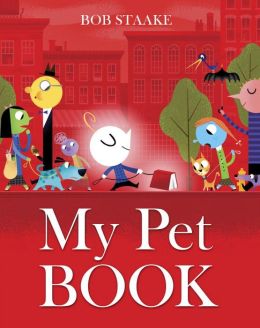
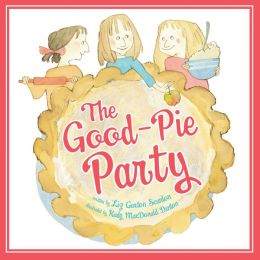

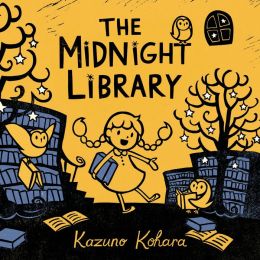
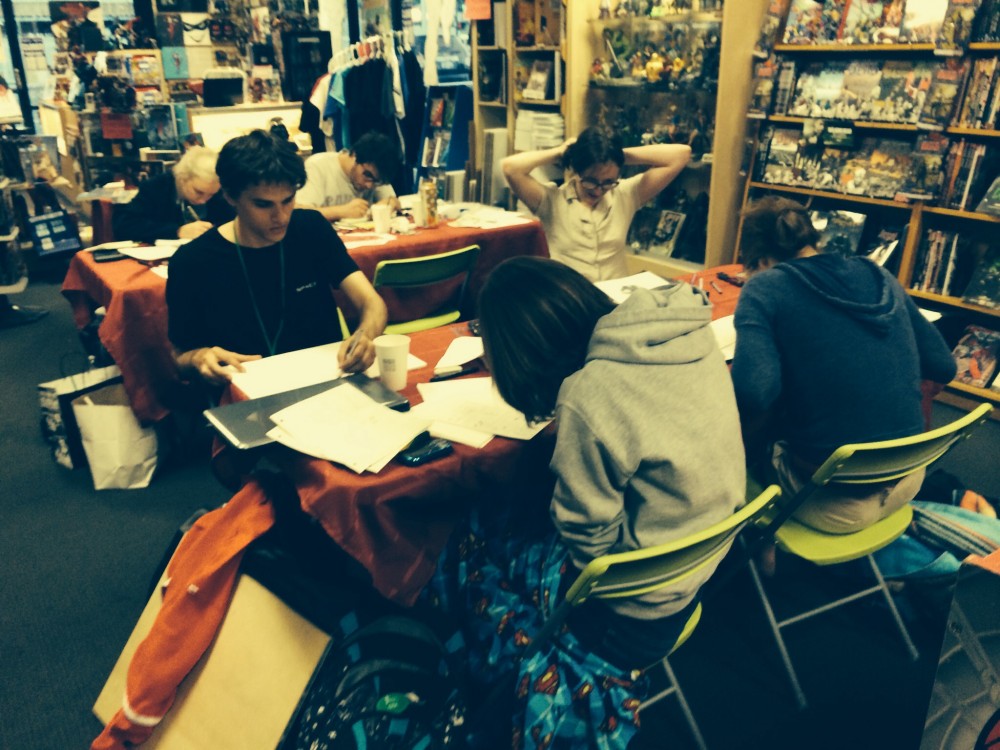













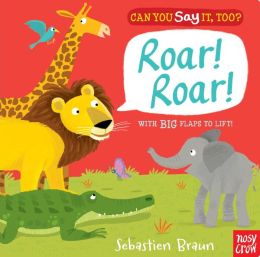




Yeah, today’s kids don’t comprehend the concept of *scheduled* programming in a world of Netflix, Hulu, Apple, Amazon, and a wealth of on-demand content…. all in the palm of their hand.
It is an era that I fondly remember, but then again… that’s because I’m an old fart at this point. Hahaha!
I saw this reported at another site. Apparently the news broke in May. I wonder why it is only now making the rounds online.
UH-OH, CHONGO!
NBC, at the very least, shows a mix of cartoon and puppet-based shows on Saturday mornings http://www.nbc.com/nbc-kids
Different shows than the ones I watched, of course, but it seems like the same experience. Seems like people are reporting on nothing
@srfan
CW ended their SM programming last weekend.
The actual event was what triggered the reporting, not the anticipation way back last Spring.
@Luigi Hann
Like the CW, NBC is using another provider to supply the E/I content.
It’s adults running the show… It’s sandlot baseball vs. Little League. “Some cereal…s’posed to be good for you…”
Or, for a better analogy, it’s like watching PBS on Saturday Morning. Lilias, Yoga and You…
Vortex was essentially a syndicated block of cartoons anyway. It showed nothing but reruns of things like Spider Man, Dragon Ball and Yu Gi Oh. Local network affiliates still do show cartoons on Saturday mornings. My local NBC station runs Qubo channel cartoons after the Saturday Today show. The other networks show the live action newsy shows.
[…] Beat has an interesting piece up titled, “RIP Saturday Morning Cartoons 1962-2014.” Also filed under […]
[…] Beat has an interesting piece up titled, “RIP Saturday Morning Cartoons 1962-2014.” Also filed under […]
[…] Beat has an interesting piece up titled, “RIP Saturday Morning Cartoons 1962-2014.” Also filed under […]
[…] Beat has an interesting piece up titled, “RIP Saturday Morning Cartoons 1962-2014.” Also filed under […]
[…] Beat has an interesting piece up titled, “RIP Saturday Morning Cartoons 1962-2014.” Also filed under […]
It is sort of amazing how many people jumped on this story. NBC showed two hours of cartoon yesterday, including a series premiere.
It can be argued that “traditional” Saturday morning cartoons are gone, but that’s been true for years. Even Vortexx was a block of programming that the CW farmed out to outside programmers.
The “first Saturday in over fifty years without cartoons” line that a lot of folks have recycled on the internet this weekend isn’t exactly true either. On September 6, 1997, all three broadcast networks pre-empted their Saturday morning line ups to cover the funeral of Princess Diana.
[…] the cancellation of Vortexx on the CW network, this is the first weekend that has had no Saturday morning cartoons on a major […]
[…] the cancellation of Vortexx on the CW network, this is the first weekend that has had no Saturday morning cartoons on a major […]
[…] This is a weird thing that will be generationally divisive and makes me more scared of young people than I already was. Saturday Morning Cartoons have gone the way of Kung Fu Theater and Creature Features. Saturday Morning Cartoons are dead. […]